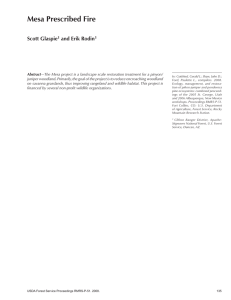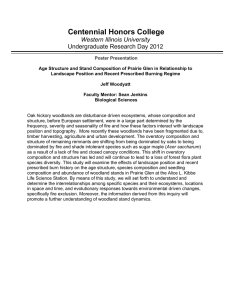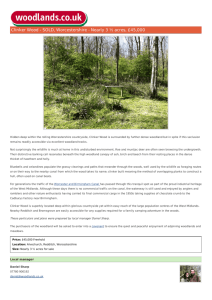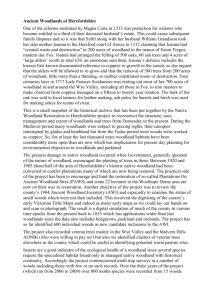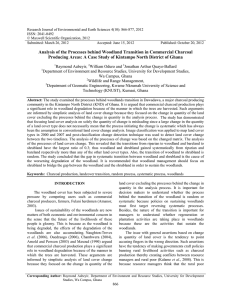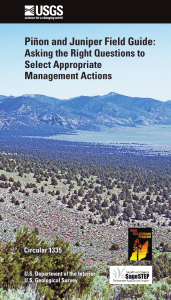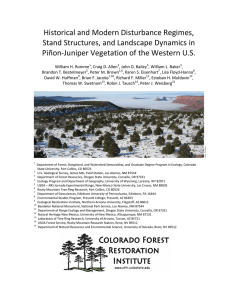Why Is Cultural Resource Site Density High in the Piñon-Juniper Woodland?
advertisement
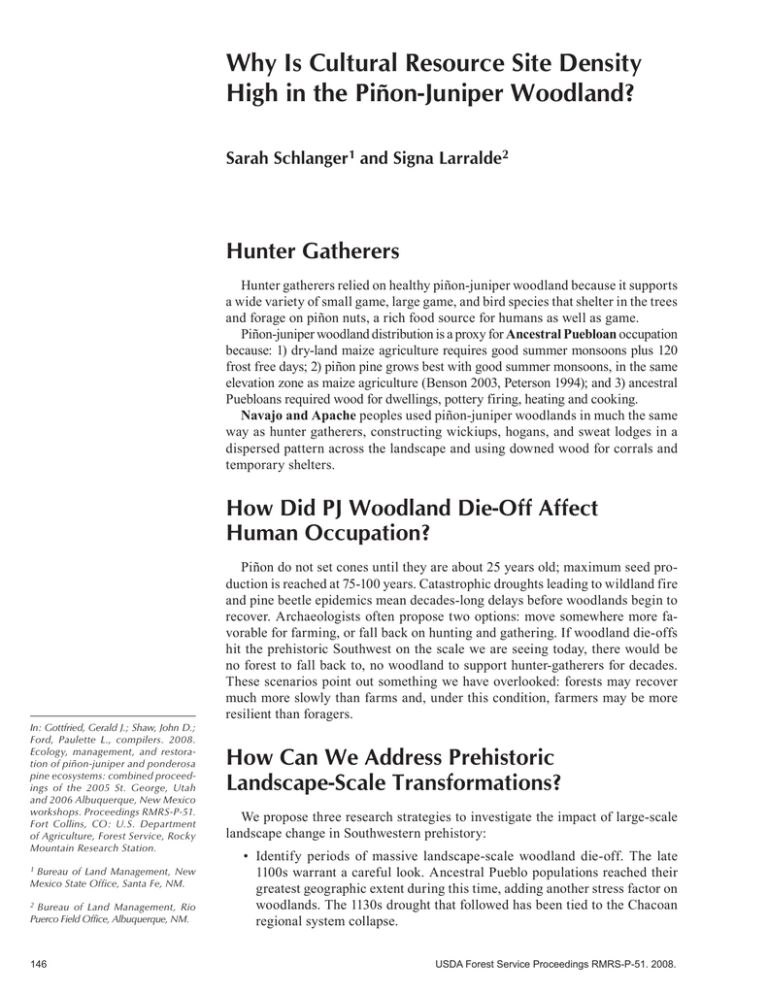
Why Is Cultural Resource Site Density High in the Piñon-Juniper Woodland? Sarah Schlanger1 and Signa Larralde2 Hunter Gatherers Hunter gatherers relied on healthy piñon-juniper woodland because it supports a wide variety of small game, large game, and bird species that shelter in the trees and forage on piñon nuts, a rich food source for humans as well as game. Piñon-juniper woodland distribution is a proxy for Ancestral Puebloan occupation because: 1) dry-land maize agriculture requires good summer monsoons plus 120 frost free days; 2) piñon pine grows best with good summer monsoons, in the same elevation zone as maize agriculture (Benson 2003, Peterson 1994); and 3) ancestral Puebloans required wood for dwellings, pottery firing, heating and cooking. Navajo and Apache peoples used piñon-juniper woodlands in much the same way as hunter gatherers, constructing wickiups, hogans, and sweat lodges in a dispersed pattern across the landscape and using downed wood for corrals and temporary shelters. How Did PJ Woodland Die-Off Affect Human Occupation? In: Gottfried, Gerald J.; Shaw, John D.; Ford, Paulette L., compilers. 2008. Ecology, management, and restoration of piñon-juniper and ponderosa pine ecosystems: combined proceedings of the 2005 St. George, Utah and 2006 ­Albuquerque, New Mexico workshops. Proceedings RMRS-P-51. Fort Collins, CO: U.S. Department of Agriculture, Forest Service, Rocky Mountain Research Station. 1 Bureau of Land Management, New Mexico State Office, Santa Fe, NM. 2 Bureau of Land Management, Rio Puerco Field Office, Albuquerque, NM. 146 Piñon do not set cones until they are about 25 years old; maximum seed production is reached at 75-100 years. Catastrophic droughts leading to wildland fire and pine beetle epidemics mean decades-long delays before woodlands begin to recover. Archaeologists often propose two options: move somewhere more favorable for farming, or fall back on hunting and gathering. If woodland die-offs hit the prehistoric Southwest on the scale we are seeing today, there would be no forest to fall back to, no woodland to support hunter-gatherers for decades. These scenarios point out something we have overlooked: forests may recover much more slowly than farms and, under this condition, farmers may be more resilient than foragers. How Can We Address Prehistoric ­Landscape-Scale Transformations? We propose three research strategies to investigate the impact of large-scale landscape change in Southwestern prehistory: • Identify periods of massive landscape-scale woodland die-off. The late 1100s warrant a careful look. Ancestral Pueblo populations reached their greatest geographic extent during this time, adding another stress factor on woodlands. The 1130s drought that followed has been tied to the Chacoan regional system collapse. USDA Forest Service Proceedings RMRS-P-51. 2008. Why Is Cultural Resource Site Density High in the Piñon-Juniper Woodland? Schlanger and Larralde • Re-evaluate “occupation gaps” and reoccupations that lagged far behind resumption of favorable rainfall and growing season regimes. The Mesa Verde region is a prime candidate for re-analysis; Arizona’s Black Mesa and New Mexico’s Pajarito Plateau are also promising. • Re-think the relationship between agricultural intensification, population size, and settlement behavior in piñon-juniper-woodland-adapted populations. The propensity of these woodlands to undergo extreme change, their slow recovery rate, and the scale of the impacts merit some thought. Under these conditions, even with harsh droughts, agricultural dependence may have been the most reliable option. References Cited Benson, M.Lisa Floyd. 2003. Ancient piñon-juniper woodlands: a natural history of the Mesa Verde country. Norman: University of Oklahoma Press. Peterson, Kenneth Lee. 1994. A warm and wet little climatic optimum and a cold and dry little ice age in the southern Rocky Mountains, U.S.A. Climatic Change. 26:243-269. USDA Forest Service Proceedings RMRS-P-51. 2008. 147


